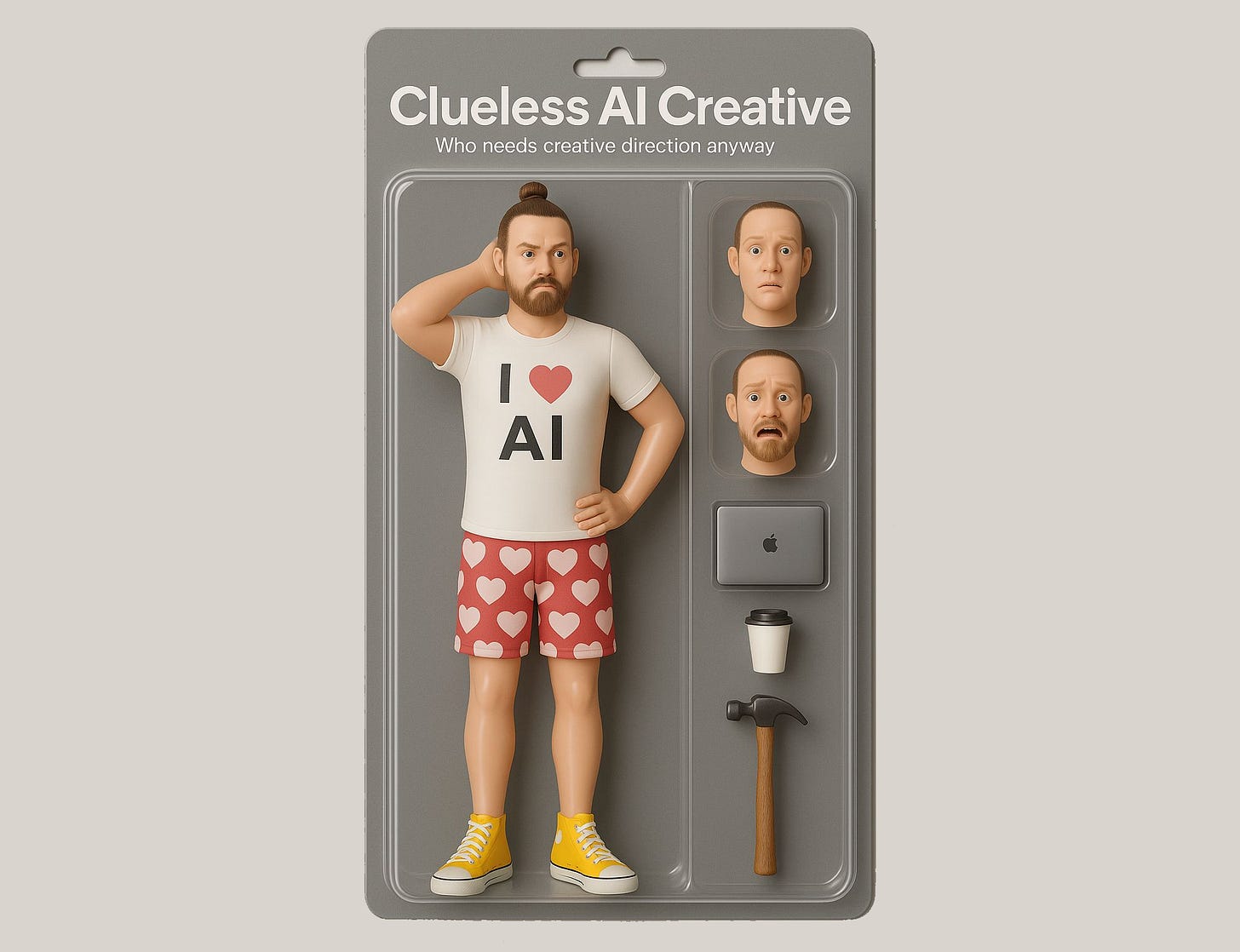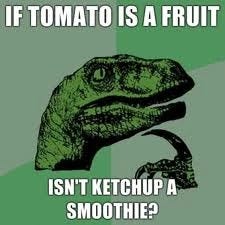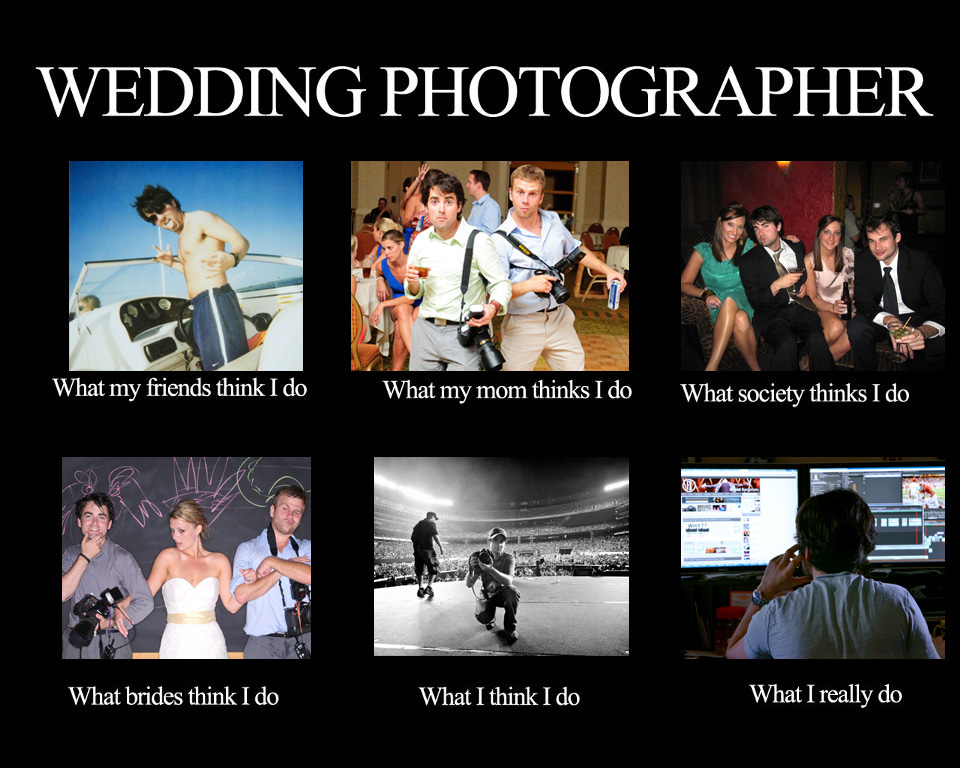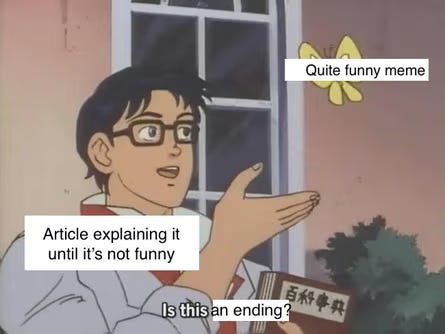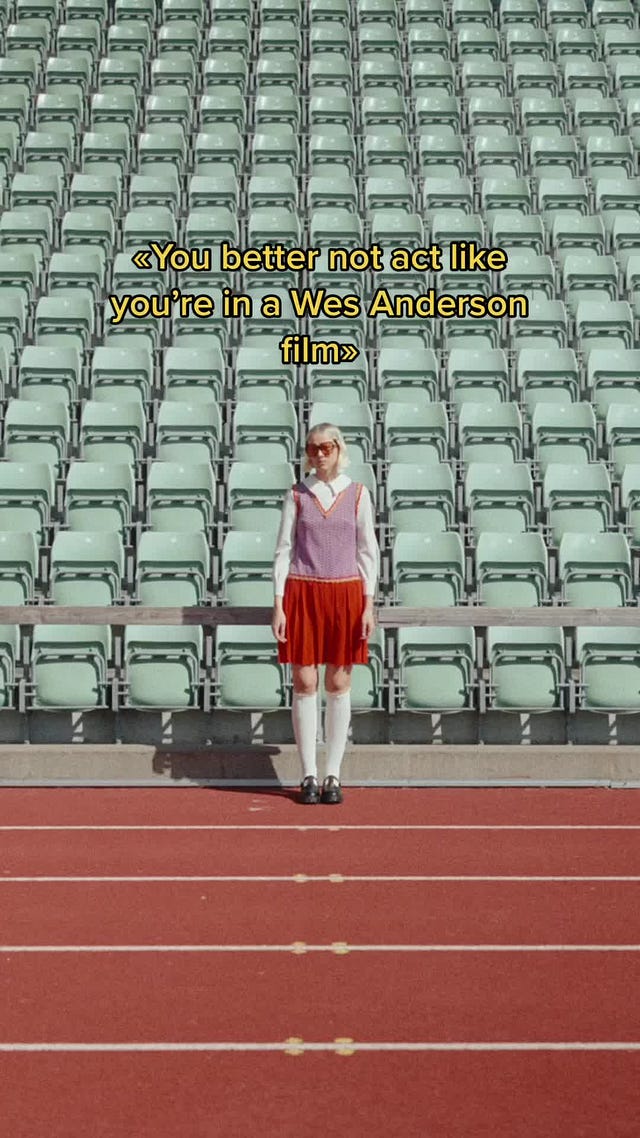Why AI Action Figures Show We've Entered Template Meme 3.0
The Cultural Psychology Behind Our Latest Meme Obsession
My social feeds have been invaded by plastic figurines.
ChatGPT images of action figures representing everyone from dentists to data scientists. Each one features the same glossy sheen, the same heroic stance, the same clamshell packaging, with accessories representing that profession —stethoscopes for doctors, laptops for programmers, creative briefs for Jockamos.
After seeing the thirtieth iteration, my eyes rolled. What an annoying use of AI.
But then it clicked: this is more than just an AI party trick. It's the latest iteration of something that's been with us since early internet culture — the template meme. And its persistence reveals something fascinating about how we express ourselves in digital spaces.
The Evolution of Template Memes
To understand why these AI trends feel simultaneously novel and familiar, we need to trace the evolutionary path of template memes:
The Early Internet (2000s): Image macros with Impact font. Remember "Success Kid"? A baby with a clenched fist against a radial background, captioned with your personal triumph. Or the entire zoo of Advice Animals — confessor bears, awkward penguins, and philosophical velociraptors? These memes allowed anyone to become a humorist by simply adding a relatable caption to a stock image.
Mid-2010s: Multi-panel narratives. "Distracted Boyfriend" expressed our fleeting infatuations with new ideas (such as AI action figures). “What People Think I Do” revealed the stereotypes and preconceptions associated with our supposedly glamorous jobs.
Late 2010s: Labeled screenshots. "Is This a Pigeon?" became the perfect expression of misidentification and false equivalence. We moved beyond simple captions to more complex visual metaphors.
Early 2020s: TikTok and IG Reels. Remember when everyone was creating "Wes Anderson presents" versions of their brand? Those meticulously symmetrical, pastel-tinted snippets of ordinary moments transformed through the aesthetic lens of auteur cinema.
And now? AI-generated image prompts. Before plastic action figures populated our feeds, we saw waves of "Studio Ghibli versions" of everyday scenes (we’ll save ethical implications for another day). Even now, "What my pet looks like as a human" is emerging as the next template wave. Each follows the same pattern: a specific prompt template that users modify slightly to personalize the output while maintaining the recognizable format.
The medium evolves, but the pattern persists.
The Reason We Can't Stop Template-Memeing
What's driving this endless cycle of template participation? It's not what you think. It's not about cultural relevance or FOMO. It's about something more fundamental: the joy of easy creative self-expression.
When you see someone's "ChatGPT action figure," your first thought is probably, "Huh, I wonder what I would look like as an action figure."
This "I want to try it too" impulse is the beating heart of template memes. These formats democratize creativity by providing:
Low barriers to entry: No design skills? No worries.
Easy self-expression: Genuine satisfaction in seeing your unique version.
Low risk participation: The established format reduces fear of creative failure.
Paradoxically, constraints make creation easier. When faced with infinite possibilities (the blank page problem), most of us freeze. But give us a clear format with just a few variables to play with, and suddenly everyone's a creator.
This is the genius of template memes—they democratize creative expression. You don't need to be an art director or a copywriter to participate; you just need to understand the template and add your personal twist.
The Corporate Misreading
While people participate for the simple joy of creative play, brands view these trends through an entirely different lens — strategic opportunities for cultural relevance. They see these templates as quick cultural shortcuts, demonstrating relevance by participating in ongoing conversations.
But here's the hard truth: when brands jump on these bandwagons, they're fundamentally misunderstanding their role in culture. Here's why:
Template participation signals creative bankruptcy. Individuals use templates because they lack the skills, resources, or confidence to create something wholly original. Brands, with their creative teams and agencies, have no such excuse.
It’s as cringe as hearing a CEO say ‘bussin' in a meeting. By the time most brands notice a template trend, it's already peaking. Their participation feels desperate rather than relevant. "How do you do, fellow kids?" made manifest.
It conflates participation with contribution. Showing up at a party isn't the same as bringing something to it. Filling in a template doesn't constitute a meaningful addition to culture.
The commercial intent transforms what was playful self-expression into transparent marketing, stripping the format of its authentic appeal in the process.
Breaking the Mold
Brands seeking true cultural relevance should resist the temptation of template trends and instead pursue a more challenging, but rewarding path:
Create formats, don't follow them. The brands we remember don't jump on bandwagons—they build vehicles that others want to ride. Apple didn't participate in trends; it established aesthetic standards that others imitated.
Enable creativity rather than mimicking it. LEGO doesn't need to post AI-generated images because they've spent decades creating tools for creative expression that people love.
Demonstrate understanding through original perspectives. Cultural relevance comes from having something meaningful to contribute, not from wearing the same costume as everyone else.
Invest in a distinctive brand grammar. Develop a signature visual style, tones, and approaches that become instantly recognizable as yours alone.
The Future of Template Memes
(and Why They Won't Disappear)
Template memes, whether they're Impact font captions or AI-generated action figures, persist because they satisfy a fundamental desire for creative self-expression with a low barrier to entry. They're the karaoke of internet culture — giving everyday people the chance to perform creativity.
And with AI tools making image creation increasingly accessible, we're likely to see more sophisticated templates emerge. The plastic action figures will give way to something else, but the pattern will continue.
For individuals, these templates will remain valuable vehicles for creative play and community building. There's nothing wrong with joining in the fun.
But for brands? The bar should be higher. Your audience doesn't need you to show them that you've seen the same trends they have. They need you to show them something they haven't seen before.
That's the difference between chasing culture and instigating it.





